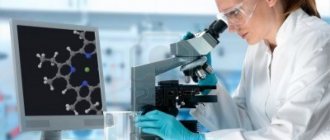The main method of treating epilepsy is drug therapy in combination with a proper lifestyle and diet. A diet for epilepsy is followed in order to maintain the effectiveness of medications, as well as to normalize the general condition of the patient.
The ketogenic diet is a diet that aims to produce increased amounts of ketone bodies in the body, which in turn are a treatment for epilepsy, since when they enter the brain, ketone bodies have an anticonvulsant effect.
The ketogenic diet, when strictly followed, has a positive result in 70% of cases. This type of nutrition is especially effective for children, despite the fact that it is most difficult for a child to adhere to this diet. However, despite its high effectiveness, such a diet should be formulated and monitored by a specialist in order to avoid negative effects on other internal organs and systems of the body.
A team of neurologists and nutritionists at the Yusupov Hospital works with patients on an individual approach, which allows them to provide attention to each individual based on the patient’s medical history and indicators. Our doctors have extensive experience in successfully treating epilepsy in adults thanks to the use of the latest techniques and medications in their medical practice.
Ketogenic diet menu for adults
The main principle of the ketogenic diet is the ratio of proteins and carbohydrates relative to fats - the balance should correspond to a value of 1 to 4, while the amount of protein consumed should be several times higher than the amount of carbohydrates.
A healthy person receives energy from carbohydrates - due to their oxidation, ATP (adenosine triphosphate) is released, which in turn is fuel for our body. If the amount of carbohydrates is reduced, the body begins to obtain energy from fat. The ketogenic diet involves restructuring the body to oxidize fats, which form ketone bodies in large quantities. Ketone bodies travel through the bloodstream to the brain, where they have an anticonvulsant effect. This diet is prescribed exclusively by a doctor for medicinal purposes, and is under no circumstances used for weight loss purposes, since an incorrectly prescribed diet can have serious consequences for some systems within the body.
During the diet, the regimen can be adjusted based on the patient’s personal indicators or wishes. The basis of such a diet should be an abundance of healthy fats, which are recommended to be obtained from the following foods:
- fatty sea fish;
- beef, lamb, pork;
- salo;
- butter and cream;
- vegetable oils - olive, coconut, flaxseed, sea buckthorn and sesame;
- seeds, nuts;
- avocado.
Menu for the week
During the ketogenic diet, patients can consume the following foods: turkey and chicken meat, eggs, fermented milk and dairy products, sea fish, in particular tuna, salmon, and herring.
Entry into the diet begins with a 3-day fast, during which patients are allowed to drink clean water. On the 4th day, patients should gradually introduce foods approved by a nutritionist into their diet.
Menu for a week of ketogenic diet:
1,2,3 days:
- Water.
4th day:
- chicken eggs (boiled) 2 pcs., butter 1 tsp., coffee or tea with added cream (high fat content);
- 2 boiled sausages, 1.5 tsp mayonnaise, 1 quarter of a tomato;
- fat cottage cheese with the addition of sour cream 150 g;
- boiled chicken breast 1 pc., butter 10 g., steamed green beans, olive oil 2 tbsp. l., tea or coffee with cream.
5th day
- A piece of butter, with the addition of 1-2 hard-boiled eggs;
- turkey meat 150 gr., vegetable salad (cucumber and onion), olive oil for dressing;
- cabbage soup with the addition of rich sour cream, pork fried with tomatoes, tea with cream;
- scrambled eggs with the addition of brisket, fresh cucumber and a slice of bread.
6th day
- 4 hard-boiled quail eggs, coffee with cream;
- boiled beef 150 gr.;
- boiled turkey fillet, tomatoes seasoned with mayonnaise;
- a piece of boiled lean fish, boiled green beans (half a serving).
Between meals, patients can have snacks: yogurt, fermented baked milk, cottage cheese, kefir. During the ketogenic diet, patients burn fat tissue, but there is no effect on muscle mass. Currently, many bodybuilders have begun to use this principle of nutrition, thanks to which they are always full of energy and strength.
Dangerous products for epilepsy
A diet for epilepsy in adults involves a complete abstinence from alcohol.
Beer, weak wines and other alcoholic drinks can not only provoke a seizure, but also aggravate the patient's condition. The most dangerous thing is drinking large quantities of alcohol in a short period of time. Seizures in epileptics most often occur due to drinking large quantities of liquid. Many neurologists recommend that patients reduce fluid intake and also prescribe medications to remove it from the body.
For people suffering from epilepsy, it is important to avoid overeating and also limit the consumption of simple sugars. A diet for epilepsy is aimed at reducing the load on the human body and preventing the development of seizures. You should limit your use as much as possible:
- refined sugar, honey;
- flour products (bread, rolls, cookies, pasta);
- various cereals;
- vegetables and fruits containing large amounts of starch (mainly root vegetables);
- alcohol;
- various sauces with a high percentage of carbohydrates.
Refusal of harmful products can not only reduce the likelihood of repeated epileptic attacks, but also improve the general condition of the patient.
It should be understood that even rare minimal violations of nutritional rules threaten the poor performance of the entire diet. It is important to turn this diet into a lifestyle. Nutritionists at the Yusupov Hospital try to make the ketogenic diet as suitable as possible for each patient. Our doctors closely monitor indicators and tests, adjust the patient’s diet if it becomes necessary.
Make an appointment
Ketogenic diet menu for adults
The diet of a person with epilepsy should be as balanced as possible.
Patients should eat large quantities of food with coarse fibers, as well as with a high content of folic acid, since epileptics often have a severe deficiency of this element due to prolonged use of medications. As a rule, the ketogenic diet is not prescribed to all patients, but only to those who do not have a positive reaction to the use of antiepileptic drugs. This diet is most effective in childhood. However, despite the high effectiveness of this diet, it has a number of contraindications:
- cerebrovascular pathologies;
- encephalopathy;
- kidney and liver diseases;
- diseases of the endocrine system (or predisposition to them);
- mitochondrial pathologies;
- diseases of the cardiovascular system.
It is most effective to follow this diet in a hospital setting.
The Yusupov Hospital provides its patients with a complete diet in the hospital, based on the testimony of the attending doctor. Since the diet is quite difficult to follow, within the hospital walls we provide maximum comfort to our patients so that they do not feel discomfort from a change of environment. The diet itself begins with a three-day fast. During this time, metabolism accelerates and the body is rebuilt, completely cleansing itself and preparing for a new diet. In the first three days, the patient is allowed to drink only clean water without gas. After which, under the strict supervision of a doctor, the required amount of fats and proteins begins to be introduced into the diet. The menu for each patient is compiled individually to eliminate the risk of complications. A sample menu on a ketogenic diet looks like this:
- first meal (breakfast) - scrambled eggs with ham or bacon, salad of non-starchy vegetables, dressed with olive oil;
- second meal (lunch) - stewed or fried pork or beef, steamed vegetables;
- third meal (dinner) - fatty sea fish (salmon, mackerel, herring), fresh vegetables and hard cheese.
The duration of this diet is regulated by the doctor. It takes at least 3-4 weeks to get results. If the diet gives a positive result, it is recommended to stick to this diet for the rest of your life.
Keto diet for epilepsy for children: menu features
The ketogenic diet for epilepsy in children has certain nuances. It provides a more gentle choice of dishes than for adults, since it has a significant impact on the child’s growth.
Approximate keto menu for children for a week:
- First day. Breakfast – cottage cheese casserole, cheese sandwich, cup of black tea. Lunch – chicken soup, baked vegetables, berry juice. Dinner – baked beef, a glass of milk.
- Second day. Breakfast - omelet with cheese and tomatoes, fruit juice. Lunch – pork chops, cabbage and cucumber salad dressed with olive oil, a cup of herbal tea. Dinner – a glass of yogurt.
- The third day. Breakfast – scrambled eggs with bacon and tomatoes, a glass of kefir. Lunch – cream cheese soup, a sandwich with butter, a cup of black tea. Dinner – steamed chicken cutlets, sweet peppers.
- Day four – fruit salad dressed with Greek yogurt. Lunch – cabbage soup with sour cream, a slice of rye bread. Dinner – green apple, glass of yogurt.
- Fifth day - cottage cheese with fruit, a cup of cocoa. Lunch – fish soup, rye crackers. Dinner – stew with pork and vegetables.
- Day six – roll of cream cheese, cucumber and smoked salmon, salad of leafy vegetables and herbs. Lunch – mushroom soup, a piece of black bread. Dinner – yogurt, sliced orange.
- Day seven – boiled sausages, 2 soft-boiled eggs, a glass of milk. Lunch – pickle, toast with cheese. Dinner – a glass of fermented baked milk.
Allowed and prohibited keto food products for a child with epilepsy
The child’s diet should contain foods that will not interfere with his growth and normal functioning. Permitted foods include freshly squeezed juices, fruits, fatty dairy products (cottage cheese, milk, kefir, yogurt, curdled milk), eggs, bacon or lard, butter, fish and poultry.
The “prohibited” food basket includes sugar, confectionery, honey, glucose-containing fruits, starchy vegetables, any cereals, pickled juices and lemonades.
When is the ketogenic diet contraindicated for children?
Under no circumstances should this nutritional system be used to improve the condition of babies under 12 months, as well as children suffering from liver, cardiovascular and kidney diseases. It will not help if you have childhood diabetes.
Ketogenic diet for children
For children, the ketogenic diet is indicated only after one year in order to avoid developmental delays and serious complications of internal biorhythms.
For normal development, children must eat all trace elements and vitamins in sufficient quantities. The ketogenic diet involves a significant reduction in carbohydrates, which can inhibit a child’s growth. Therefore, the child must additionally consume vitamin complexes. The ketogenic diet for children will be approximately the same as for adults. However, children are also prescribed special fatty milk drinks, which “accustom” the child’s body to consuming large amounts of fat. The milk drink can be consumed in the form of a shake or ice cream.
The ketogenic diet in children requires constant monitoring. Children who adhere to this diet may experience delayed physical development and loss of body weight. Regular visits to the doctor and dietary adjustments will help prevent the deterioration of the little patient’s condition.
Modified Atkins diet for childhood epilepsy.
Several severe catastrophic epilepsies present in childhood, including severe infantile epilepsy. myoclonic epilepsy, Lennox-Gastaut syndrome and myoclonic-astatic epilepsy (Douz syndrome). Seizures in these disorders are difficult to control; sometimes only due to multiple and toxic levels of antiepileptic drugs. Surgery to treat epilepsy is only possible on a very small scale and the costs are prohibitive. Uncontrolled seizures pose a range of risks to children, including higher mortality rates, developmental delays and/or regression, and cognitive impairment. Treatment of seizures is fundamental to improving overall childhood outcomes. epilepsy. Disadvantages of antiepileptic drug therapy and epilepsy surgery have created a need for alternative treatments. The ketogenic diet is one of the oldest treatments available for epilepsy. A controlled, high-fat, low-carbohydrate, and protein-restricted diet that maintains a chronic state of ketosis while providing protein and calories for adequate growth. The diet compares favorably with the newer antiepileptic drugs (AEDs) that have been developed to treat epilepsy in children. Studies of newer antiepileptic drugs such as vigabatrin, lamotrigine, tiagabine and gabapentin show that only 3% to 10% of all intractable patients achieve complete seizure relief with the introduction of these new While with the ketogenic diet, 33% of patients with intractable epilepsy have more than a 50% reduction in seizures and a 15-20% cessation of seizures. follow a diet, they can reduce or stop taking antiepileptic drugs. This results in improved alertness, behavior and cognition. The traditional ketogenic diet with a 4:1 ratio of fat: carbohydrates + protein has its disadvantages: it limits calories and fluids, and requires weighing foods. usually limited to 1 g/kg/day, with most remaining calories as fat, which can lead to hypoproteinemia and growth problems. advocates starting a diet, both with and without fasting. diet includes kidney stones, constipation, acidosis, poor growth, weight loss, and hyperlipidemia. The modified Atkins diet is a nonpharmacologic treatment for intractable childhood epilepsy. it was developed as a less restrictive alternative to the traditional ketogenic diet. This diet is prescribed in an outpatient setting without fasting, allows unlimited amounts of protein and fat, and does not restrict calories or fluids. Early studies demonstrated efficacy and safety. 13–20 However, these studies were uncontrolled and included small numbers. There are no randomized control trials evaluating the effectiveness of the modified Atkins Diet in children and adults with refractory epilepsy. plans to study whether there are clear benefits in terms of seizure control in children with refractory epilepsy receiving the modified Atkins diet compared to controls. Eligible children will be randomized using computerized random number tables in two parts. groups: intervention group and control group. Both groups will undergo a baseline 4-week observation period during which parents will be asked to maintain daily log seizure activity; recording the type, duration and frequency of attacks. In the intervention group, children will begin the modified Atkins diet after this 4-week baseline period. receive a normal diet without any dietary supplements and remain on the same constant antiepileptic drugs for 3 months. Antiepileptic drugs will remain unchanged. during the 3-month trial period in both groups, unless a change in AED regimen is medically indicated; for example, side effects of medications or status epilepticus; in this case standard therapy is provided. Children will be seen as outpatients after 1, 2 and 3 months. checked at every hospital visit. The three-day dietary schedule will be reviewed at each visit. to count calories and carbohydrates consumed and to confirm compliance. Weight will be checked at each visit. Seizure frequency will be recorded daily during a 4-week baseline period and a 3-month period. period of study. At the end of the 3-month study period, the number of seizures in the previous 28 days will be used to calculate the average number of seizures, which will be expressed as a percentage of the average baseline number of seizures per day (i.e., the number of seizures during the 4 weeks before the child started the diet or control phase of the study). changes will be made to the child's antiepileptic medications during the 4-week baseline or 3-month study periods unless medically indicated; for example, side effects of medications or status epilepticus; in this case standard therapy will be provided. Tolerance of the diet and its side effects will be assessed by a parent interview at each visit: vomiting, lethargy, poor appetite, refusal to eat, and constipation. Any other parental concerns or parental reports of side effects will also be noted.Treatment of epilepsy in Moscow
Epilepsy is not a death sentence, but a disease that, with proper treatment, allows a person to live a full life without any deprivation. To maintain a good quality of life, patients with epilepsy are strongly recommended to regularly visit a neurologist and undergo all necessary examinations.
At the Yusupov Hospital, treatment of epilepsy is performed by experienced neurologists and epileptologists who are fluent in various effective methods for eliminating this pathology. Professional nutritionists, based on the recommendations of the attending physician, create a nutrition plan that will be as safe as possible for the patient. The course of treatment for epilepsy at the Yusupov Hospital can significantly reduce the manifestations of the disease and achieve stable remission.
You can make an appointment with neurologists, epileptologists, nutritionists, undergo an examination, and get more information by calling the Yusupov Hospital.
Make an appointment





